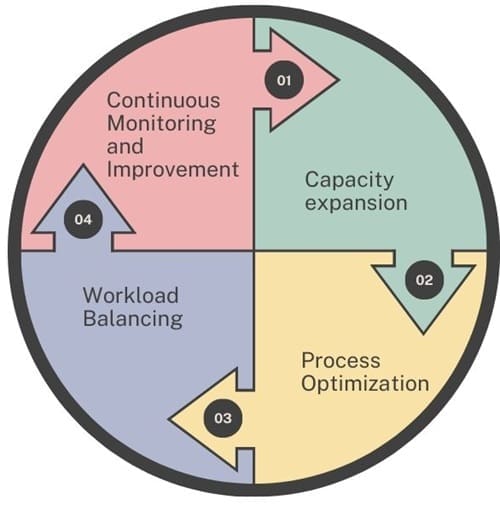Estimated reading time: 3 minutes
In manufacturing, a bottleneck is a point where the work slows down or becomes obstructed. This limits overall output. The main reasons for this include equipment failures, shortages of materials, or inefficient processes. It has a significant impact on production, cycle times and resource usage.
Definition of Bottleneck
In Lean Six Sigma, a bottleneck is a specific point or stage in a process where the rate of output is lower than the rate of input, causing a backlog of work to accumulate. This restricts the overall flow of the process, often leading to delays, increased lead times, and decreased productivity.
Identifying and addressing bottlenecks is crucial in Six Sigma because they can hinder the overall performance and effectiveness of a process.
It can lead to longer lead times and reduced customer satisfaction. It is important to identify and manage bottlenecks to improve efficiency and productivity. This requires a combination of capacity expansion, process improvement, and continuous improvement initiatives.
These are essentially capacity constraints in the production system. They occur when a particular resource. It includes a workstation, machine or employee, that is unable to meet the demands or workload placed on it. Bottlenecks can have a major impact on the overall cycle time or throughput, as they determine the maximum rate that units can move through the system.
Bottlenecks tend to accumulate work-in-progress inventory (WIP) or queues in the area upstream of their hindered resource. The bottleneck is unable to process the work as it arrives, causing congestion and delays downstream.
How to Manage Bottlenecks?
Lean Six Sigma initiatives are focused on identifying and eliminating bottlenecks to improve process efficiency, reduce waste and increase productivity. It is managed in a variety of ways by organizations:

- Capacity expansion: By investing in more equipment, people, or technology, you can increase the capacity of resources that are hindered. This will help relieve congestion and improve productivity. This approach, however, requires careful consideration to ensure that it is cost-effective and aligned with the overall production goals.
- Process Optimization: Lean Six Sigma emphasizes the identification and elimination of non-value-added activities, waste and inefficiencies within the production process. By streamlining workflows, improving setup times and improving the flow of processes, organizations can reduce the impact of bottlenecks on overall system performance.
- Workload Balancing: Balancing workloads between multiple resources or production line can prevent bottlenecks or their spread throughout the system. Redistributing tasks, adjusting the schedule, or implementing load levelling strategies can help organizations optimize resource usage and maintain a smoother workflow.
- Continuous Monitoring and Improvement: Effective bottleneck management relies on the continuous monitoring, measurement and analysis of key performance indicators. These KPIs are cycle times, throughput and inventory levels. By identifying and addressing the bottlenecks continuously, organizations can adapt to changes in demand patterns, market conditions and operational challenges. This ensures sustained improvements in efficiency and productivity.
Final Words
Bottlenecks are critical challenges in manufacturing and Lean Six Sigma methods. This is because they restrict the flow of work, resulting in delays, reduced efficiency, and decreased throughput. Organizations can improve system performance and reduce waste by identifying and managing bottlenecks. They can also achieve higher levels of operational excellence, competitiveness, and efficiency.











